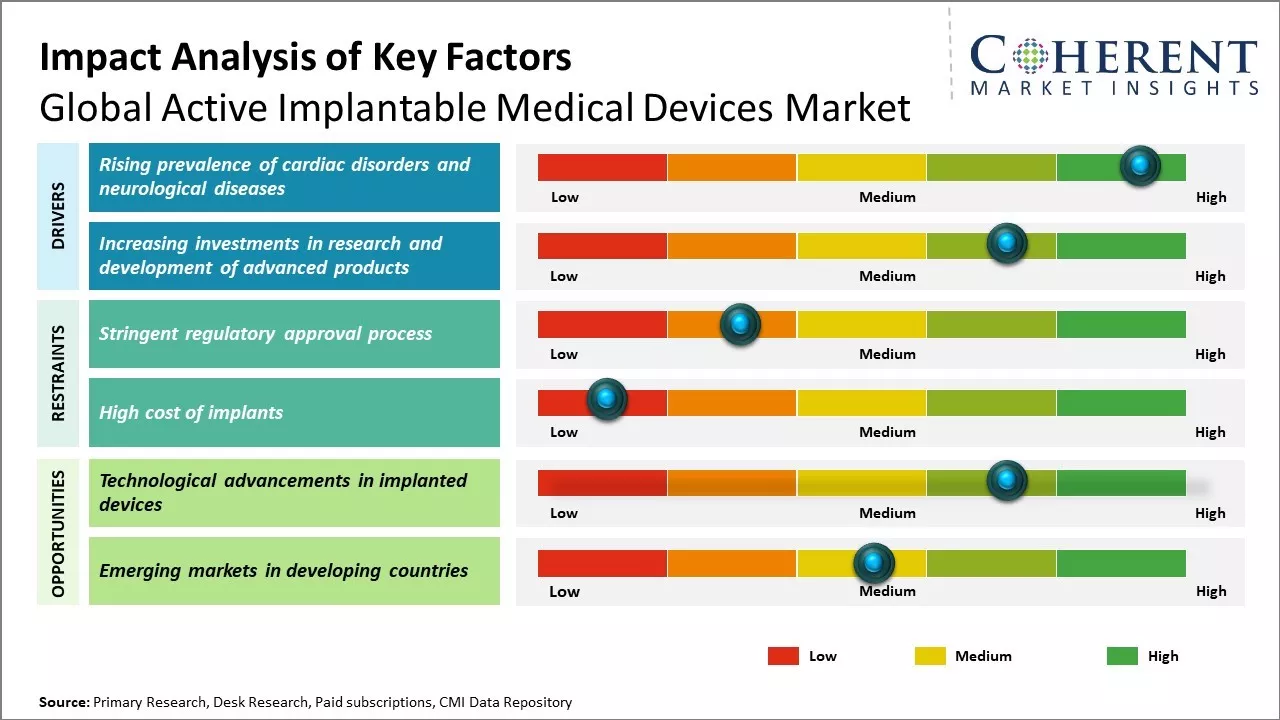Global active implantable medical devices market is estimated to be valued at USD 27.41 Bn in 2025 and is expected to reach USD 45.21 Bn by 2032, exhibiting a compound annual growth rate (CAGR) of 7.4% from 2025 to 2032.

To learn more about this report, Request sample copy
Global active implantable medical devices market growth is driven by increasing prevalence of cardiac and neurological disorders. Rising aging population, growing awareness about advanced treatment procedures and favorable reimbursement policies can also drive the market growth. Technological advancements in these medical devices with focus on miniaturization and improvements in battery life have increased preference for active implantable devices over other treatment options. High cost of these devices and procedural complications can hamper the market growth. However, ongoing research aimed at development of safer and economical products can offer new opportunities in the near future.
Market Driver: Rising prevalence of cardiac disorders and neurological diseases
Rising prevalence of cardiac and neurological diseases across the globe can drive the market growth. Ageing population, sedentary lifestyles, unhealthy dietary patterns and increased life stresses significantly contributes to rise in chronic health conditions. Cardiovascular diseases are the leading cause of death worldwide. As per estimates by Health Experts, over 17 million deaths each year can be attributed to heart attacks and strokes. Nearly half of these are premature deaths in people under 70 years of age. Many people opt for invasive surgeries and medical device implants like pacemakers, defibrillators and cardiac stents to effectively manage life-threatening arrhythmias and blocked arteries. Implantable devices have proved remarkably effective in restoring normal heart rhythm and improving quality of life for millions suffering from cardiac issues. Neurological illnesses also poses huge burden on global health. Dementia, Alzheimer's, Parkinson's disease, epilepsy are some of the major neurological conditions affecting people. It is predicted that over 106 million people will be living with dementia by 2050. Many neurological diseases severely impair motor and cognitive abilities, thus, making people struggle in basic daily activities. Active implantable devices like deep brain stimulators and vestibular implants are transforming the lives of patients with tremors, seizures, balance and hearing issues. Specially designed neural implants allow recording of brain signals and electrical stimulation to areas affected with promising results. These are rapidly becoming the standard treatment approach for advanced stages of several neurological disorders. With widespread prevalence of cardiac and neurological ailments, there will be huge demand for implantable cardioverter defibrillators, pacemakers, vagus nerve stimulators and other such devices. Growing investment in this sector, technological advancements and policy support can address this looming healthcare crisis through effective disease management strategies using active implantable medical devices.
Joining thousands of companies around the world committed to making the Excellent Business Solutions.
View All Our Clients